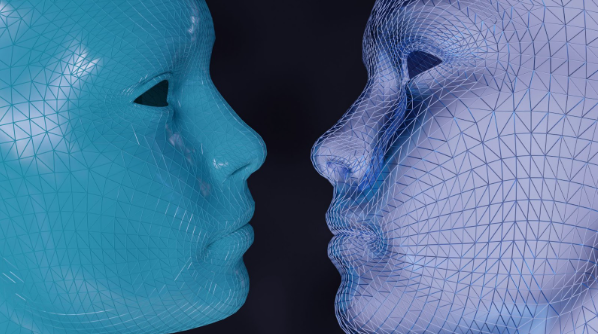The digital divide in today’s interconnected world remains a major global challenge. If you’re wondering why the digital divide is a concern, just look at its implications in almost every area, from education and healthcare to economic opportunities and social inclusion. The inability to access the internet prevents students from participating in virtual classes or engaging in online learning platforms. It hinders individuals’ participation in the digital economy, impacting their earning potential. It also deprives entire communities of opportunities to join online networks and contributes to their social isolation.
Fortunately, blockchain technology can be used to bridge this gap and help create inclusive digital ecosystems.
Blockchain as a solution
As you may know, blockchain technology is decentralized and transparent, making it a potential solution to bridge the current digital divide. Blockchain works by creating distributed ledgers, which allows for efficient and secure data sharing and eliminates centralized intermediaries. This comes in handy in regions with limited infrastructure, facilitating P2P transactions and information exchange.
Furthermore, transparency and immutability are key features of blockchain technology that promote accountability and trust, which are the most essential elements to create a digitally inclusive world. By using the potential of blockchain technology to operate in low-bandwidth environments at low costs, it is possible to create more accessible and equitable digital services and overcome the challenges caused by the digital divide. There are blockchain projects, such as Philcoin and RightMesh, that are already doing great work to bridge the existing digital divide.
Let’s see how these two projects promote digital inclusion in communities with limited connectivity.
Philcoin: Building Digital Inclusion Through Blockchain-Based Philanthropy

Philcoina blockchain platform dedicated to philanthropy, is actively working to address the growing digital divide by providing secure, low-bandwidth connectivity for everyday Web3 services. These services range from education and commerce to social media and entertainment. With a mission to connect approximately 3 billion people around the world who have so far been digitally excluded, Philcoin strives to create a global system where people with limited access to the internet can benefit from improved bandwidth and connectivity.
As a blockchain platform, Philcoin harnesses the power of decentralized technology to ensure secure, transparent, and efficient operations. Philcoin’s PHILApp encapsulates its philanthropic approach and its goal of creating a digitally inclusive ecosystem. An all-in-one app, PHILApp is based on the give-to-earn model and serves as a platform for all educational, social, and donation activities. Philcoin rewards users for their daily interactions on PHILApp like chatting, trading, gaming, learning, and donating. However, it allows users to redeem their rewards only after sharing half of their rewards, which encourages global donations and fosters a community of donors.
Philcoin’s give-to-earn model benefits both beneficiaries and donors. While providing beneficiaries with a reliable way to receive financial support by helping them connect with like-minded donors, it also helps donors receive recognition and access various features such as staking and rewards, which enhances their user experience and influence on the platform.
The upcoming PHILApp 2.0 release, currently under development, promises to enrich this ecosystem by introducing a range of social and financial tools within a unified platform. Additionally, the planned release of a non-custodial wallet will give users full control over their funds, allowing them to carry out their philanthropic activities. Philcoin’s decentralized structure ensures that every donation is part of an efficient and transparent network, reflecting its commitment to ethical and transparent operations.
RightMesh: Decentralized Connectivity for Underserved Regions

Straight mesh RightMesh is a decentralized wireless mesh networking protocol designed to provide Internet connectivity in areas where Internet infrastructure is poor or non-existent. It creates a peer-to-peer network to allow devices to communicate directly with each other and eliminates the need for centralized servers and base stations. This makes RightMesh a powerful solution for areas with little or no cellular coverage.
RightMesh turns a user’s phone into a node in the mesh network. When a person uses the node to access the web, the node automatically gains access to the user’s cryptocurrency stored in their Ethereum wallet. The more users in a zone use RightMesh, the more prosperous the zone becomes through cryptocurrency revenue and blockchain-based internet connectivity.
RightMesh is resilient to network outages because its decentralized nature ensures that even if some of its nodes go offline, the network can continue to operate and maintain connectivity.
Challenges and future prospects
While projects like Philcoin and RightMesh have gone some way to bridging the digital divide, the task is complex and multifaceted. The lack of robust infrastructure in rural and remote areas is the main barrier to accessing the internet. In addition, the high cost of internet services and lack of digital literacy are barriers to many people accessing and using digital technologies.
Despite these challenges, the future of a digitally inclusive world remains bright. Blockchain platforms like Philcoin are constantly evolving, and initiatives like PHILApp 2.0 are expected to further expand their impact. While technological innovations can address infrastructure challenges, blockchain-based financial services can play a key role in promoting economic growth. Moreover, its immutability can help protect sensitive information, which is essential for building trust in the digital age.
Number of views of the publication: 2,447




